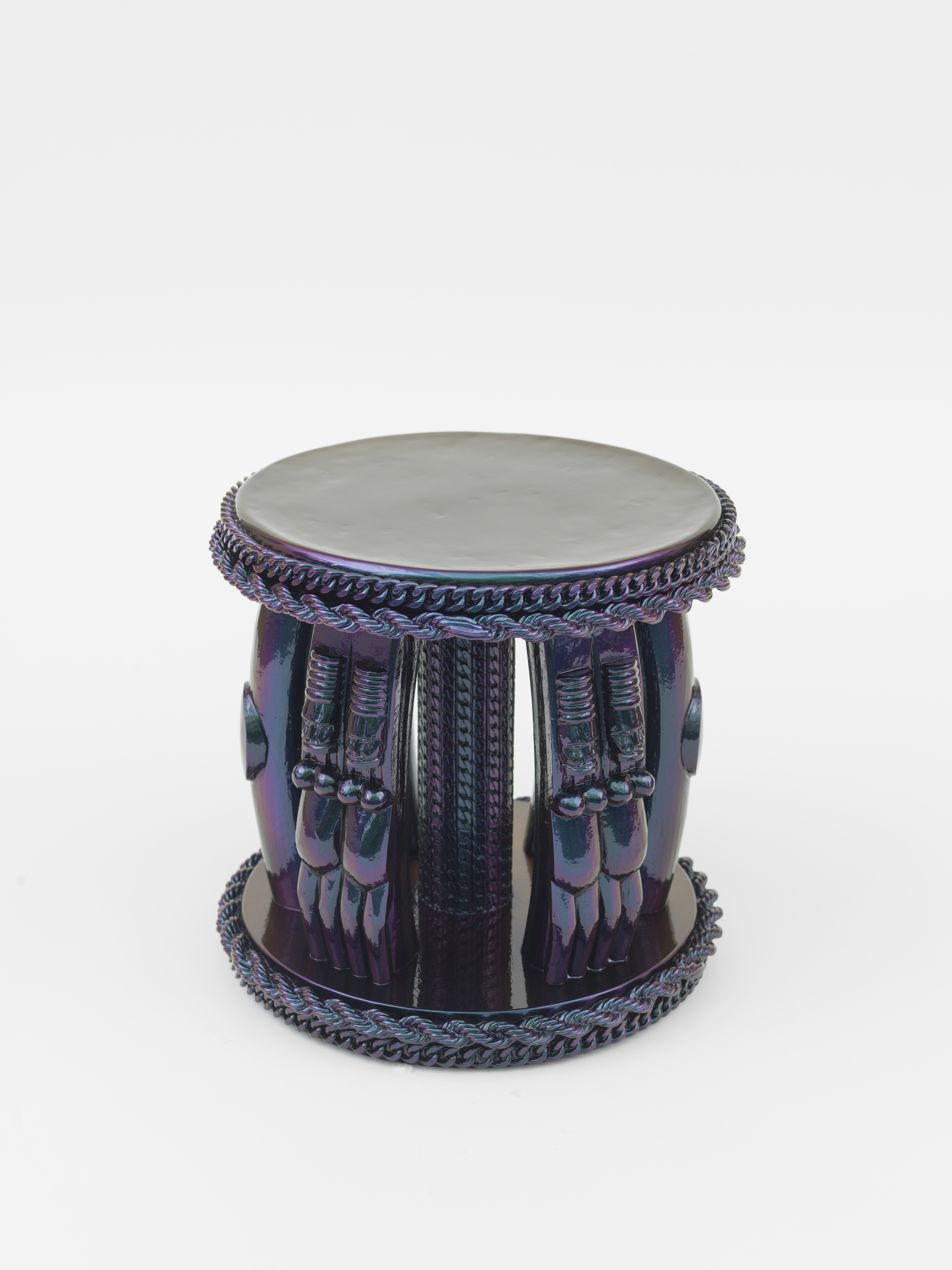Rashaad Newsome – Reclaiming Our Time

LOOKING BACK / LOOKING FORWARD
Alok Vaid-Menon
In order to reclaim something, it must have been stolen. Call it cubism (not tribal art). Call it gender (not Black). Call it museum (not Ghana). Call it new (not ancient). They say that the first people annihilated upon colonial contact were gender non-conforming. I wonder, if given the time, they would have been able to convince us that they were not, in fact, men wearing dresses. That neither them nor the garments they adorned, nor the statues they adored were gendered. What does it mean to be a not? To be defined by absence? The most sophisticated critique is one which unsettles the very foundation of the question to begin with. Are you a man or a woman? No. From the cover of Vogue, to the New Museum, the rat race ‘beyond the binary’ has commenced and everyone is haphazardly scampering toward it. Everyone that is, except Rashaad Newsome. He is sitting on a stool in his new exhibition RECLAIMING OUR TIME shaking his head, maybe even amused. When you throw a word like “race,” or “woman,” or even “African,” or “American,” on one of Newsome’s creations, it just doesn’t stick. Like an undercooked piece of spaghetti on a fridge it droops and eventually falls into its own insignificance. In a moment defined by reactionary politics, righteous moral indignation on all sides, and the desire for absolute answers and truths, Newsome invites us to stay a while, take a seat, dig deeper. How do you depict an image that does not exist? I mean, no longer exists? I mean, was stolen? I mean, could exist here right now if we wanted it to? You look at history to remember a future. Building off his celebrated exhibition STOP PLAYING MY FACE, Newsome remembers a future. He pairs nontraditional weaves from African American beauty shows with traditional Africa statues, his old work with his new work, luxury with idolatry, novelty with antiquity, and – for a moment – when gazing upon his subjects gazing upon themselves, there is a sense of resolution, therapy even. Perhaps the cohesion we seek comes from developing a different relationship with the complexity we fear. In Newsome’s work there are no rules: oppositionality becomes compatibility, an ocean is swallowed and spat back out (simultaneously), the clock stops, rewinds, and fast-forwards at the same time. This is what happens when queerness begins with race, and not the other way around. Newsome has a tendency toward the impossible: he takes subjects disappeared from time and history and exalts them – fighting for abundance where others see absence and insisting on a futurity in that which has been deposed. And in that move he teaches us that what we are looking for is already here. Has always been.